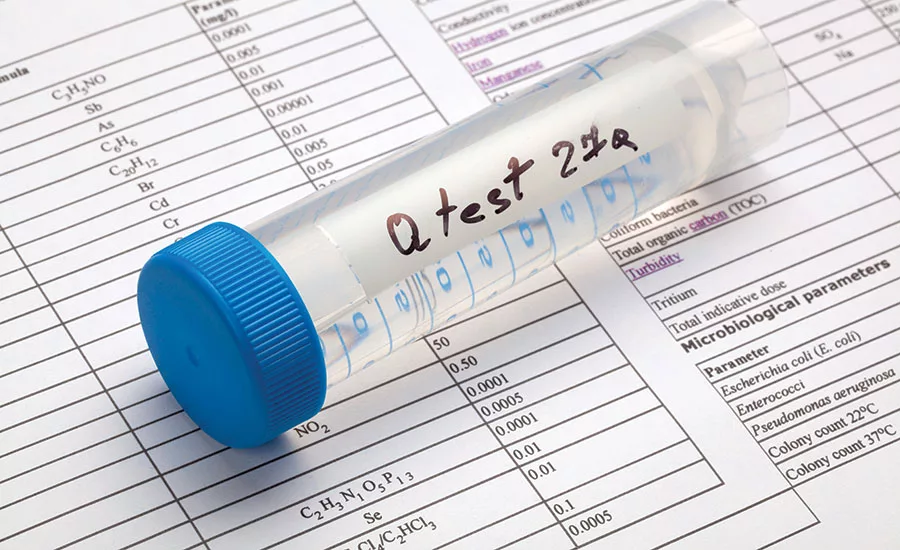Water Quality Testing Tips

George Bailey, vice president of Industrial Test Systems Inc., is very familiar with water quality testing and the significance it holds. Just because private water sources aren’t regulated the way public sources are doesn’t mean they shouldn’t be tested regularly and proficiently. Bailey spoke about the tools and steps necessary in ensuring safe water quality to a crowd of water well drillers at the 2015 South Atlantic Well Drillers Jubilee. In a recent interview with National Driller, he revisited how water should be tested, what drillers should look for and where they can seek guidance with regard to contaminants.
Q. What significance does water quality hold with respect to the water well drilling industry?
A. When water supply wells are newly constructed or serviced/repaired, the water must be tested to verify it is safe to drink.
Q. Why do we test well water?
A. We test well water to ensure that it is safe to drink and aesthetically appealing — smell, taste, color.
Q. Why cover water quality as a lecture topic?
A. Whether it’s drillers that are new to the industry or longtime veterans that need a refresher course, everyone needs to know the basics about well water quality.
Q. Is water quality as well understood by water well drillers as many would assume?
A. Some know more than others, but I find that many drillers haven’t been given everything they should know about drinking water quality.
Q. If drillers are looking for a starting point, a set of actual water quality standards to go by, what should they use/refer to?
A. National Primary Drinking Water Regulations (NPDWRs or primary standards) are legally enforceable standards that apply to public water systems. Primary standards protect public health by limiting the levels of contaminants in drinking water.
Q. What’s the difference between primary and secondary drinking water regulations?
A. Primary Drinking Water Regulations include enforceable limits, called “maximum contaminant levels” or “MCLs” of water contaminants that present a risk to human life. They fall into one of the following categories: microorganisms, disinfectants, disinfection byproducts, inorganic chemicals, organic chemicals and radionuclides. Secondary Drinking Water Regulations are non-enforceable guidelines relating to contaminants, secondary maximum contaminant levels or “SMCLs,” that affect aesthetic water conditions such as taste, odor and color, but do not pose a risk to human life.
Q. Could you sum up what the most common water well contaminants are, based on what you’ve seen in the field, and where they come from in a nutshell?
A. Groundwater contamination can originate on the surface of the ground, in the ground above the water table or in the ground below the water table. They can be naturally occurring contaminants or created by man. The most common tested for include, but are not limited to: total/fecal coliform (this is one of the most important, as it is an indicator that a contamination source exists), arsenic, lead, zinc, nitrates, nitrites, total dissolved solids (TDS), copper, iron, manganese, mercury, sodium and pH. In areas near fracking, also include: barium, bromide, chloride (salt), foaming agents, methane, ethane, sulfate, strontium, and total petroleum hydrocarbons or oil and grease (HEM).
Q. Just how strong of a relationship is there between location and the kind of contaminants drillers and homeowners can expect? Are there any particular contaminants that are widespread across the country?
A. When we talk about naturally occurring contaminants such as arsenic, manganese, iron, etc., geology has everything to do with what we will find in the groundwater. A great resource for mapping concentrations in the soil can be found at the U.S. Geological Survey website (www.usgs.gov).
Q. Where can drillers go to find out what kinds of contaminants are most common in their area?
A. All public water suppliers are required to make available to the public their annual water report called a Consumer Confidence Report or “CCR.” Other resources include www.epa.gov and www.usgs.gov.
Looking for a reprint of this article?
From high-res PDFs to custom plaques, order your copy today!








